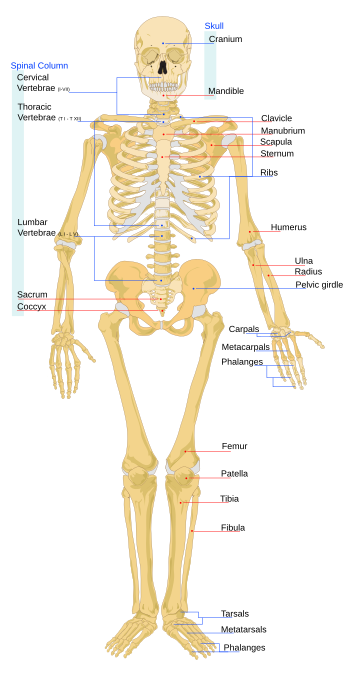The human skeleton is composed of 270 bones at birth[1][2][3] and by the time adulthood is reached, some bones have fused together to give a total of 206 bones in the body. The human skeleton can be divided into the axial skeleton and the appendicular skeleton. The axial skeleton is formed by the vertebral column, the rib cage and theskull. The appendicular skeleton, which is attached to the axial skeleton, is formed by the pectoral girdles, the pelvic girdle and the bones of the upper and lower limbs.
The human skeleton serves six major functions; support, movement, protection, production of blood cells, storage of ions and endocrine regulation.
The human skeleton is not as sexually dimorphic as that of many other primate species, but subtle differences between sexes in the morphology of the skull, dentition, long bones, and pelves exist. In general, female skeletal elements tend to be smaller and less robust than corresponding male elements within a given population. The pelvis in female skeletons is also different from that of males in order to facilitate child birth.

No comments:
Post a Comment